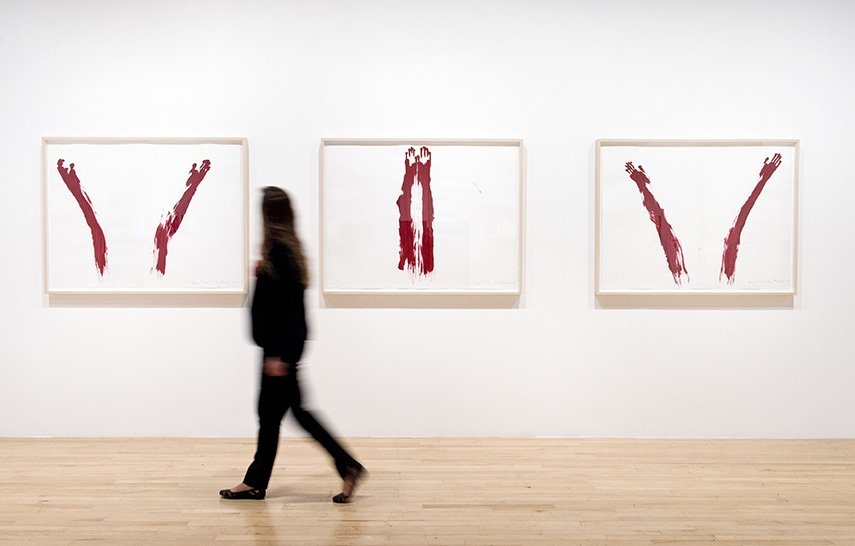Ana Mendieta
Photograph Source
From Guggenheim
Ana Mendieta was born in Havana on November 18, 1948. At the age of 12, after her father joined anti-Castro counterrevolutionary forces, Mendieta was sent to the United States with her sister under Operation Pedro Pan. They spent their first weeks in refugee camps before being sent to an orphanage in Dubuque, Iowa. In 1966, the year she began studying painting at the University of Iowa, Mendieta was reunited with her mother and younger brother; her father joined them in 1979, having spent 18 years in a Cuban political prison for his involvement in the Bay of Pigs invasion.
Mendieta received a BA in art in 1969 and an MA in painting in 1972, both from the University of Iowa. Seeking a more powerful means of image making, Mendieta then enrolled in the university's progressive MFA Intermedia Program, founded and led by the German artist Hans Breder. She found an affinity with the work of Vito Acconci, Lynda Benglis, Chris Burden, Bruce Nauman, Robert Smithson, and Carolee Schneeman, as well as the work of the Viennese Actionists and the Fluxus group. She quickly developed a prolific practice in which her body, the earth, and other organic materials such as blood, fire, feathers, and wood served as the subject of photographs, slides, films, and videos, as well as performances, prints, and artist's books. In 1973 Mendieta traveled with her MFA class to Mexico, where she began her Silueta (Silhouette) series (1973–80), in which her body, or more often, a simple outline of her figure, was impressed into various sites outdoors and the impression documented through photography or film. That same year she performed Untitled (Rape Scene) in her apartment in response to the rape and murder of a local student, and made the video Sweating Blood; in both works she again used her own body to address violence against women.
In the mid-1970s Mendieta started exhibiting internationally and regularly visiting New York, eventually moving to the city in 1978, a few months after completing her MFA. In 1979 she presented a solo exhibition of her photographs at A.I.R. Gallery in New York, where she met the Minimalist sculptor Carl Andre, whom she would marry in 1985. In 1980 Mendieta was awarded a John Simon Guggenheim Foundation Fellowship and a National Endowment for the Arts grant. She was also invited to exhibit in shows sponsored by the Cuban government, and this initiated a period of reconnection with her homeland. In 1983 she spent a year in Italy as the recipient of the Rome Prize, during which she realized studio-based sculpture for the first time. From 1983 until her death in September 1985, Mendieta lived between Rome and New York.
The New Museum of Contemporary Art in New York hosted Mendieta's first survey exhibition in 1987, and in 2004 the Hirshhorn Museum and Sculpture Garden in Washington, D.C., organized a major traveling retrospective. In 2009 Mendieta was awarded a Lifetime Achievement Award by the Cintas Foundation.
Ana Mendieta - Body Tracks, 1982 - Courtesy of Hayward Gallery


